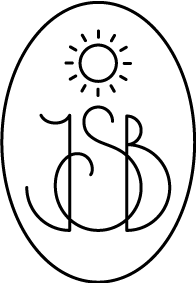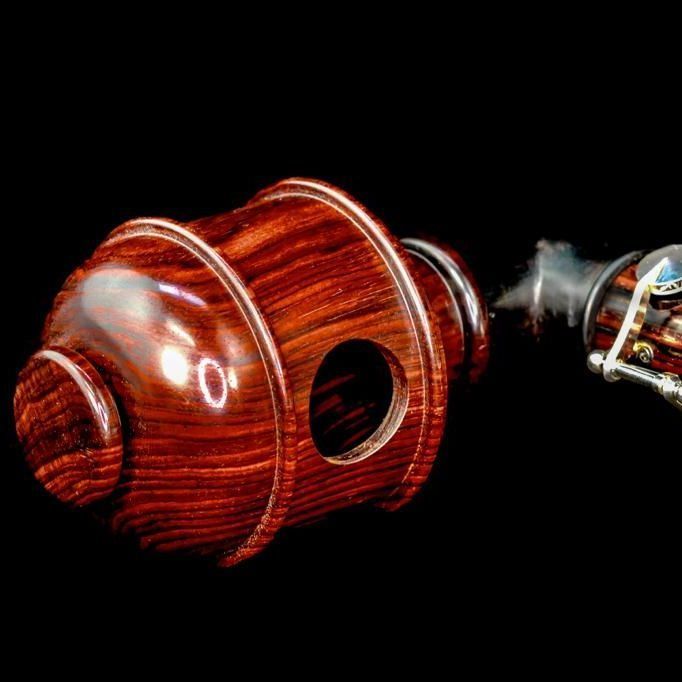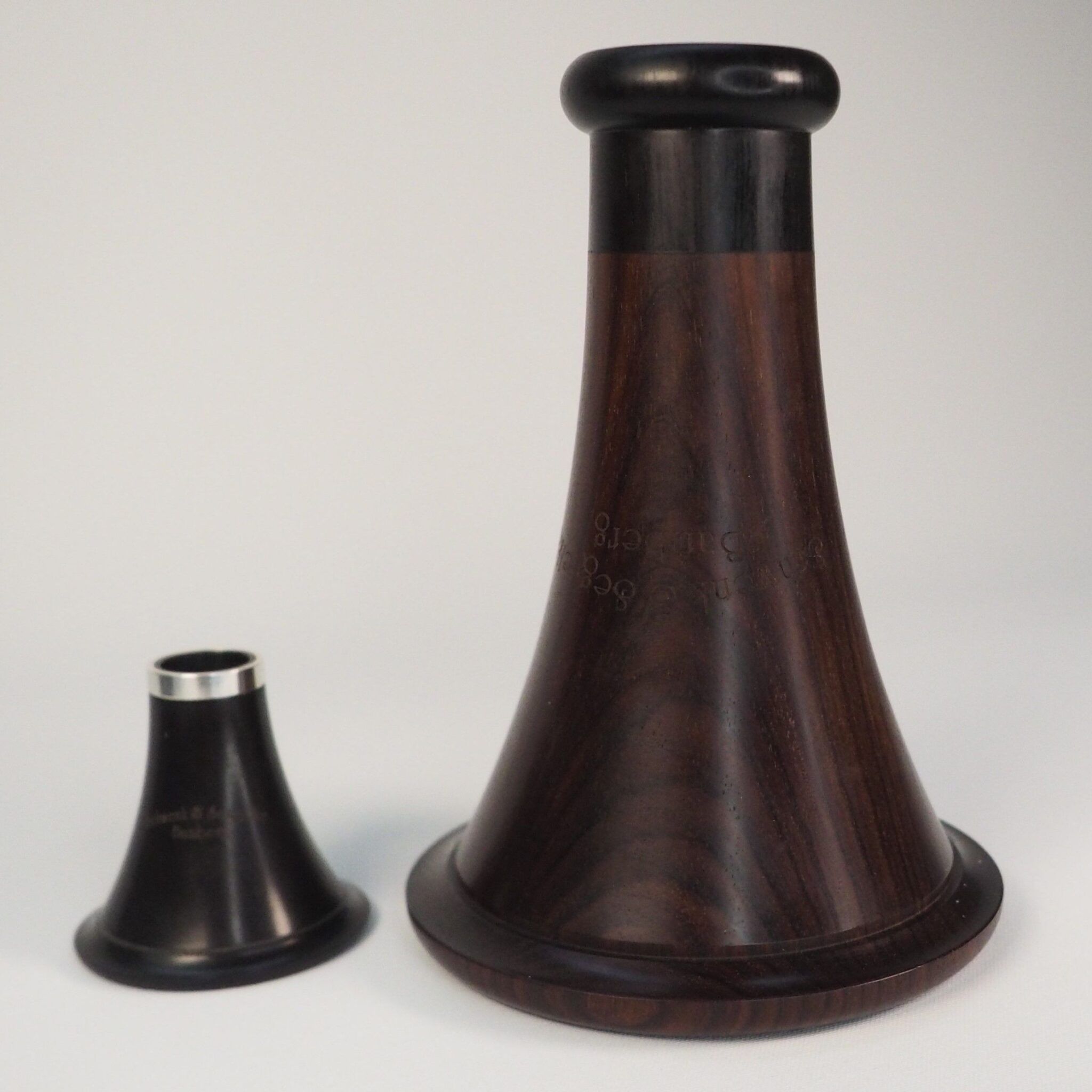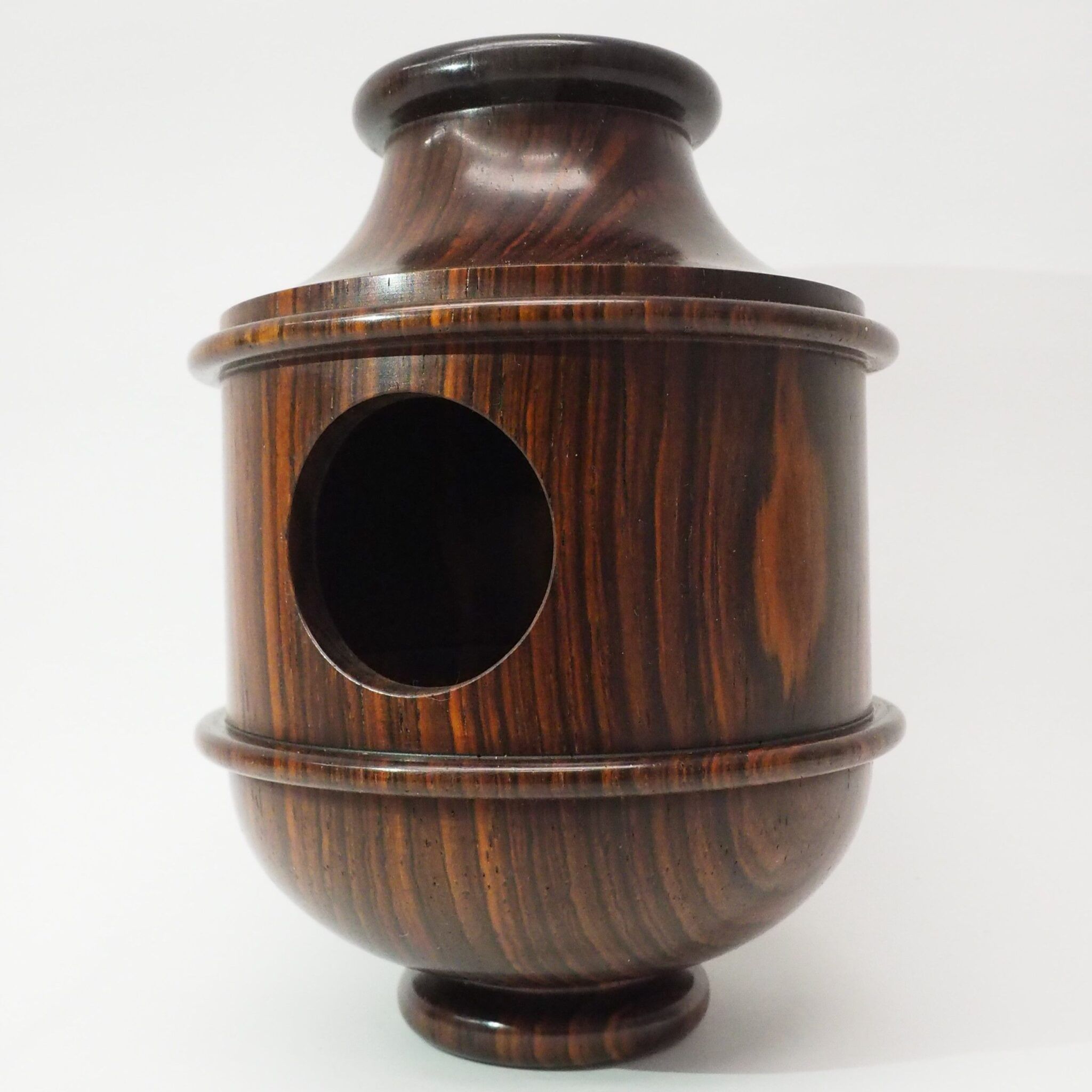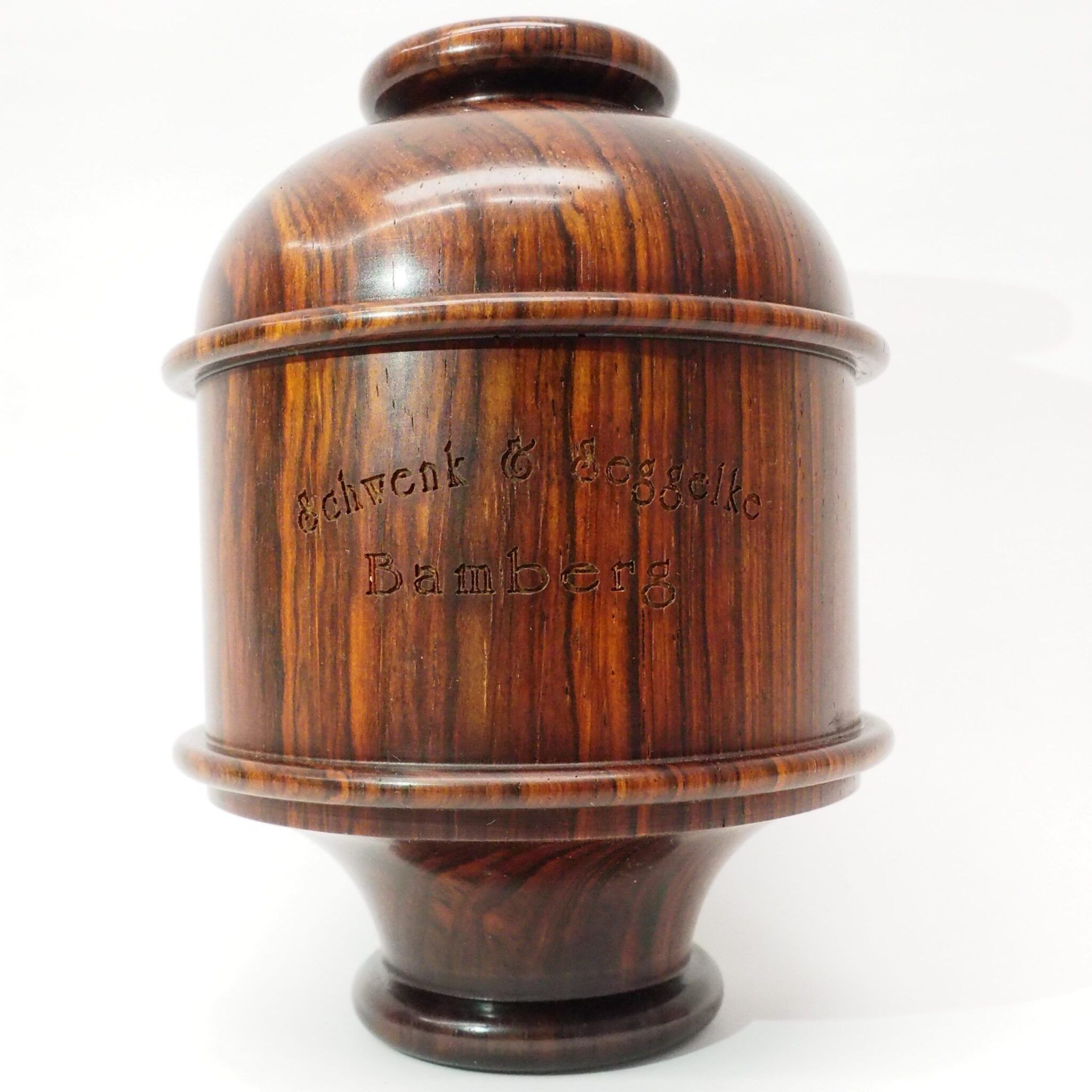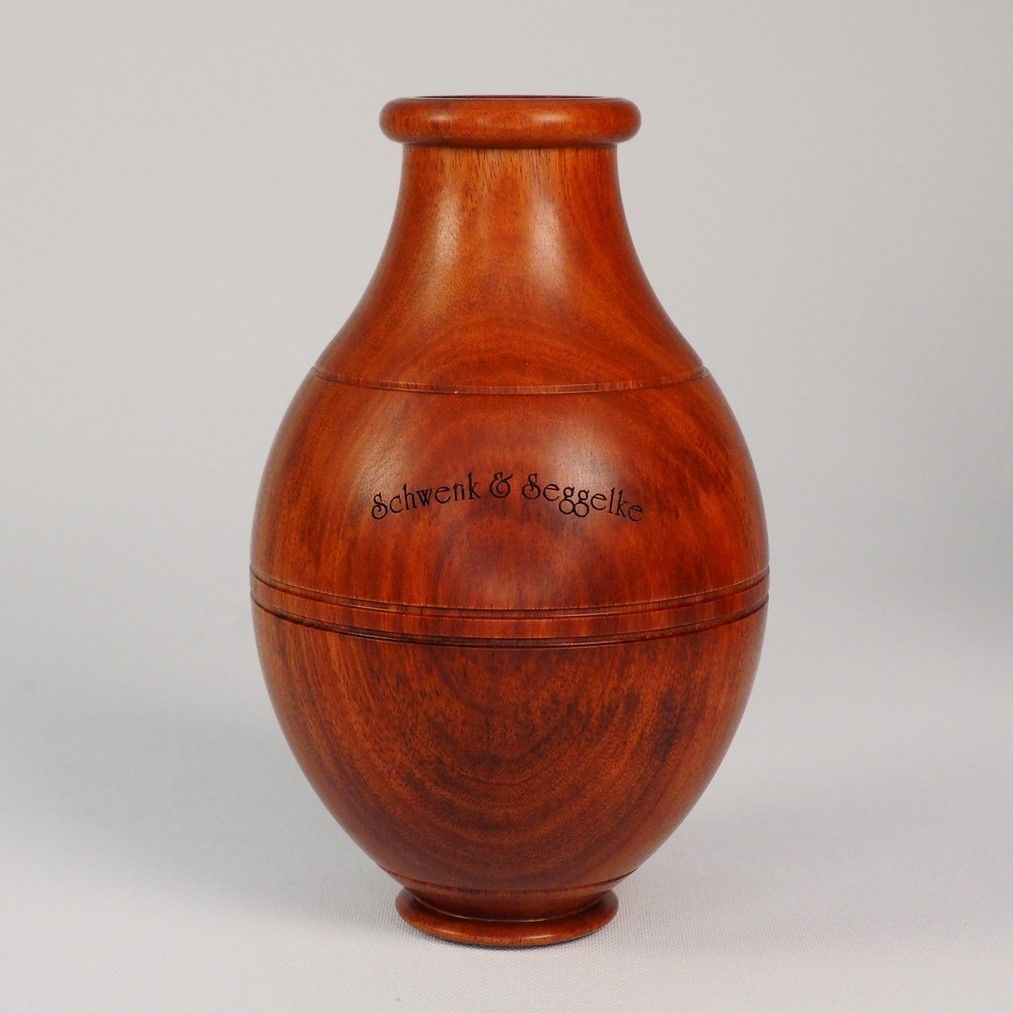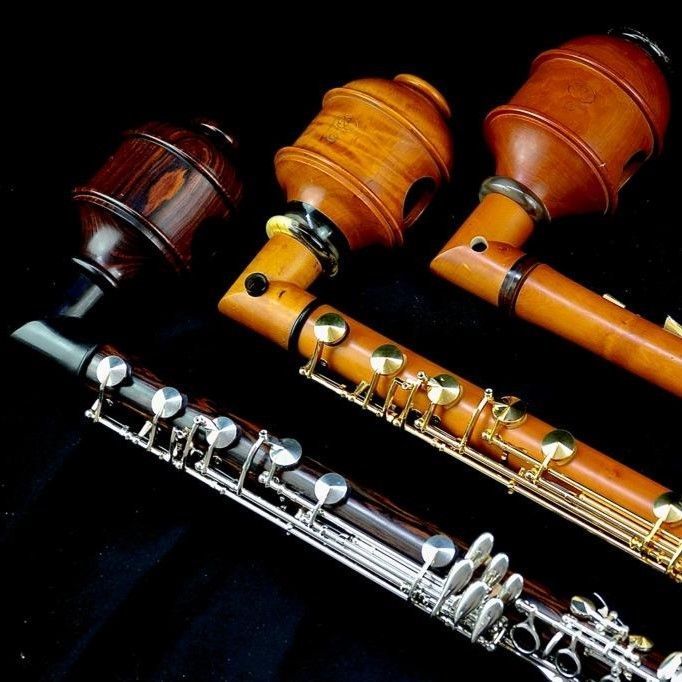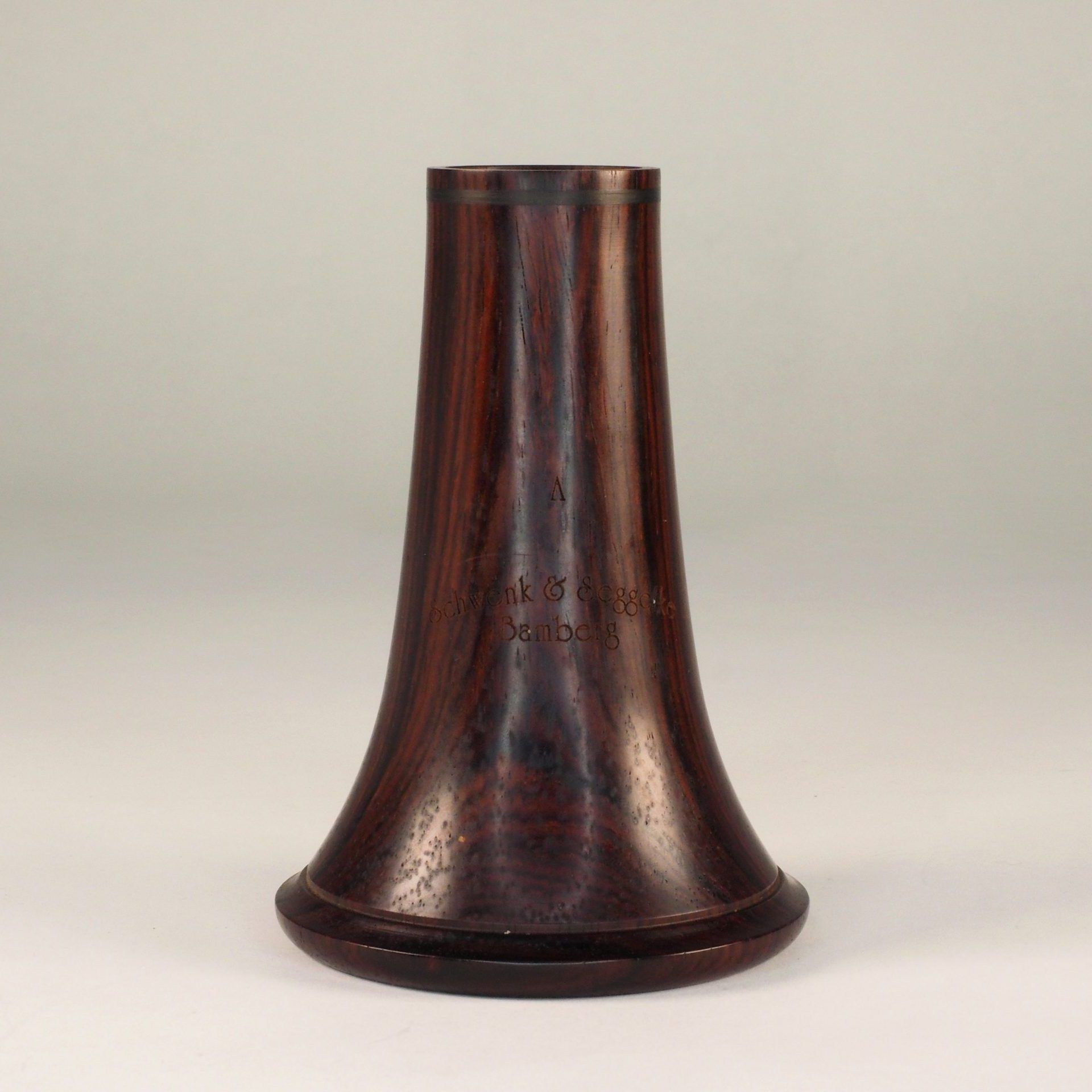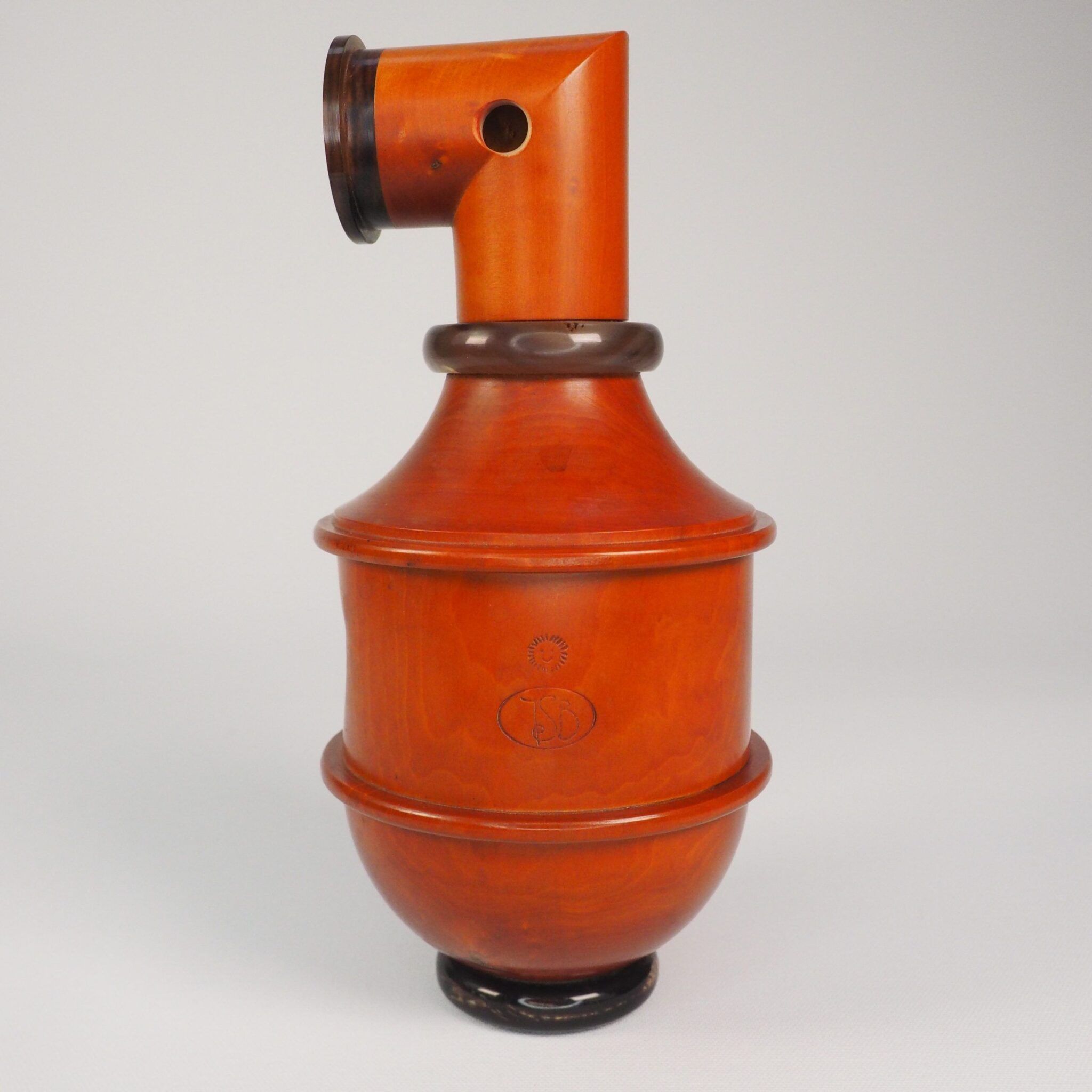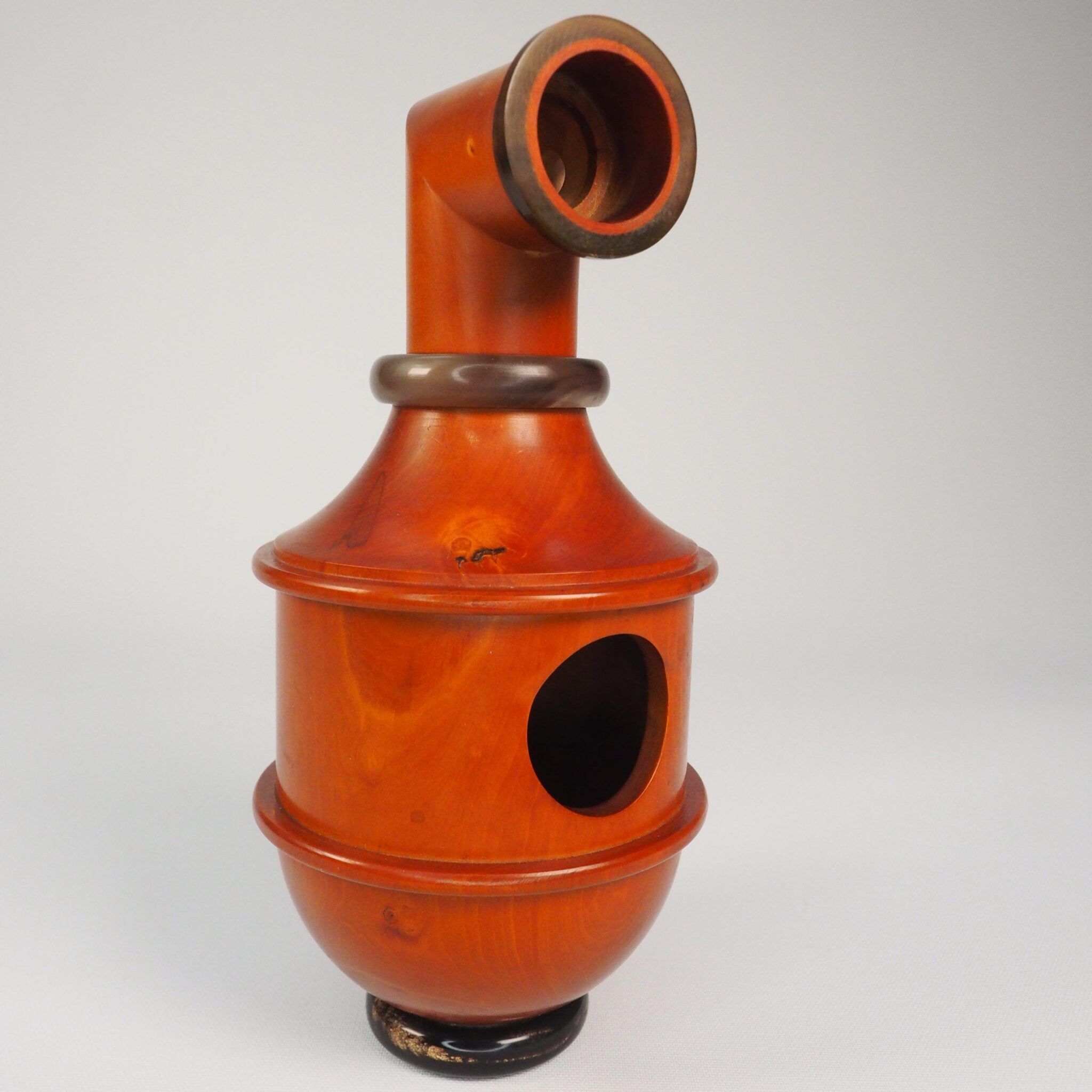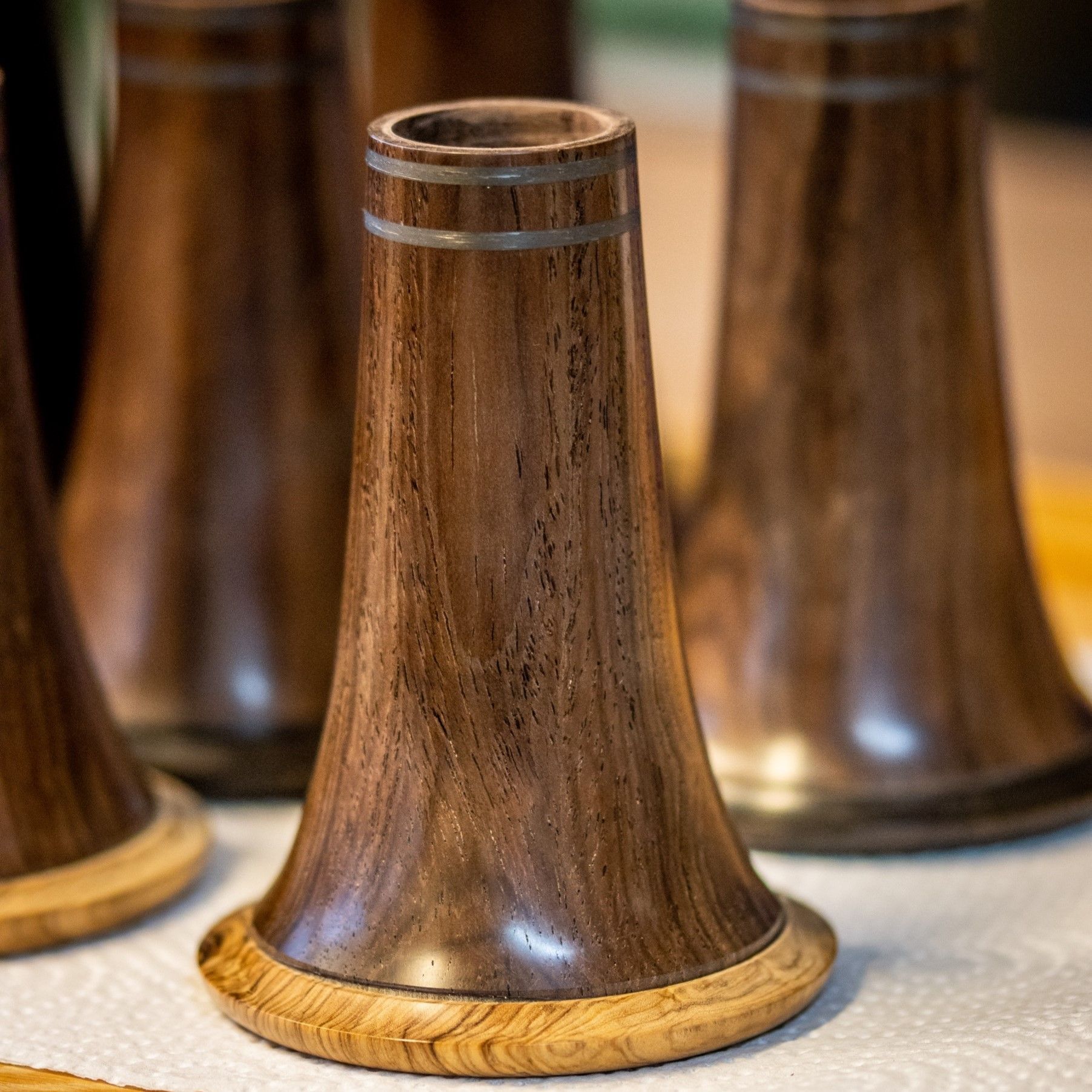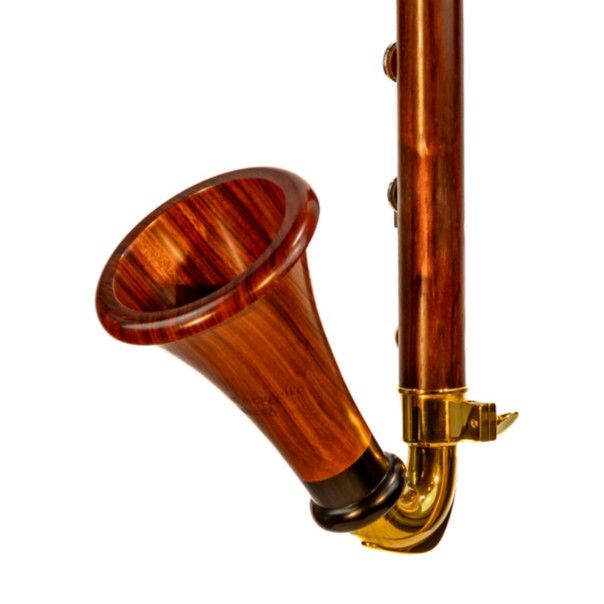THE SEGGELKE
Clarinet-BELL
In our SEGGELKE clarinet workshop, everything revolves around offering you the best possible sound potential. We cordially invite you to discover our collection of high-quality bells. Let us shape the sound of your clarinet together and create an instrument that will raise your musical expressiveness to a new level.
The bell is an essential part of the clarinet, located at the lower end of the instrument. Its main task is to amplify and project the sound by collecting the vibrations generated by the instrument and directing them outwards.
It’s all about resonance. The right bell centers the sound and adds stability. It is not only the long notes such as the low e or b’ that benefit from the bell being perfectly matched to the instrument: the bell also acts as a resonator for all other notes.
Thanks to the specific shape and size of the bell, the sound waves are focused and supported, resulting in a powerful and well-balanced sound. In addition, the bell helps to improve the resonance of the instrument and stabilize the sound.
INDIVIDUAL CHOICE OF WOOD
With our bells, we offer you the option of choosing between five types of wood. Each type of wood gives the instrument an individual sound characteristic and allows you to find the perfect sound for your music.
PERSONALISEDADVISE
FOR THE ULTIMATE SOUND
We are proud to be able to present you with a wide selection of our high-quality SEGGELKE bells for your clarinet. As the bottom part of the clarinet, the bell plays a decisive role in shaping your individual sound. We keep various models and designs in stock so that you can find the optimum combination for your personal sound aesthetics.

OUR BELL MODELS
Our range includes various models that offer you a wide selection of options. From cups with metal rings in silver-plated or gold-plated versions to special models with carbon fibre ring or wooden rings – from grenadilla wood to boxwood. We have the perfect bell for your clarinet.
Models for our
German clarinets
| Clarinet model | Matching bell model |
|---|---|
| 2000 B-flat | B 112 D |
| 2000 A | A 114 D |
| high G / high A-flat | AsG 60,5 |
| Eb | Es 83,5 |
| D | D 88,5 |
| C | C 96,5 |
| low G | B 106,5 F |
Our bell models for German clarinets do not only fit our
Schwenk & Seggelke clarinets, but also German clarinets from other manufacturers like Dietz, Leitner & Kraus, Wurlitzer, Yamaha and Schreiber.
We do not offer bells with a bell keys for clarinets from other brands, as our bell mechanism is designed differently.
In the case of the Seggelke–Line with German bore, please note that this series has a bell model specially optimized by us with different dimensions.
Models for our
Vienna clarinets
| Clarinet model | Matching bell model |
|---|---|
| Vienna model in B-flat | B 112 D |
| Vienna model in A | A 114 D |
Here you can get more information about the Vienna clarinets from Schwenk & Seggelke.
At the Seggelke–Line with a Vienna bore,please note that this series has a bell model specially optimized by us with different dimensions.
Models for our
French clarinets
| Clarinet model | Matching bell model |
|---|---|
| 1000 / 1000+ B-flat | B 106,5 F |
| 1000 / 1000+ A | A 109 F |
| Eb | Es 83,5 |
| D | D 88,5 |
| C | C 96,5 |
| low G | B 106,5 F |
Here you can get more information about the French clarinets from Schwenk & Seggelke.
Our bell models B 106.5 and A 109 F also fit Buffet Crampon clarinets.
Models for our
Reformboehm clarinets
| Clarinet model | Matching bell model |
|---|---|
| 3000 B-flat | B 112 D |
| 3000 A | A 114 D |
Here you can get more information about the Reformboehm clarinets from Schwenk & Seggelke.
Models for our
low clarinets
| Clarinet model | Matching bell model |
|---|---|
| Basset horn | F 140 |
| Bass clarinets | B 180 |
Our special
bell models
We have very special bell models for basset clarinets. Depending on the model, a basset clarinet can be played with a “normal” bell for clarinets in A or B-flat or for low G clarinet. However, we also offer the so-called Stadler bell and a d’amore bell especially for our basset clarinets. Both models are inspired by historical clarinets.
Even if it seems that the bell can only influence the lowest notes of the clarinet, when you play it you soon realize that the sound of the entire instrument is affected, especially the high register. We therefore offer all possible bell shapes that have been used in the history of the clarinet:
The d’Amore bell
With this bell, the instrument combines the tonal quality of the traditional clarinet d’amore with the extended range of a basset clarinet. Anton Stadler planned the construction of such an instrument as early as 1795 and we are still building it today. This bell is pear-shaped. Its inner shape follows the outer contour.
The Stadler bell
The Stadler bell for our modern basset clarinets is a direct replica of the “Liebesfuß” developed by Anton Stadler and Theodor Lotz. In this instrument is where history and modern times meet. This bell model may have been Stadler’s favorite form of the basset clarinet bell and is based on a sketch from around 1800.


